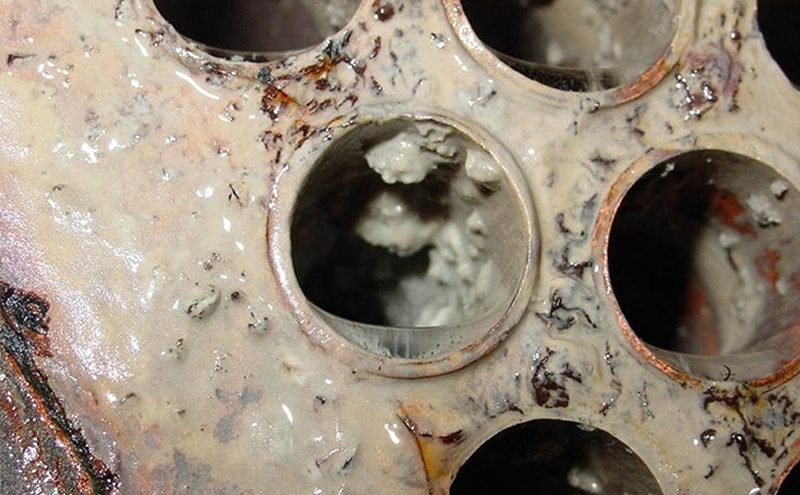
No one likes going to the dentist. Between the scraping, drilling and expense it’s an altogether unpleasant experience. However, did you know that your visits would be less frequent if it weren’t for biofilms? Here, Dr Simona Vasilescu of water, energy and maintenance solutions provider NCH Europe, explains why biofilms could be costing many firms upwards of £7,000 in excess annual electricity bills.
We all fight plaque daily and we know how expensive it is when the dentist has to step in. We get plaque because bacteria in our mouths form biofilms, which become difficult to remove and lead to problems. The same process occurs in water cooling systems, and the associated issues can be much more expensive than a filling.
What is a biofilm?
Biofilms are made up of a collection of microbial cells that have attached themselves to a surface and the extracellular biopolymer, or slime, which they produce. This biopolymer protects the bacteria from external threats such as predation and biocides.
Bacteria prefer to group together in colonies along a surface that provides a naturally advantageous environment for them to multiply. By producing ‘slime’ these colonies become a biofilm that is protected from the outside world. Bacteria have had millions of years to evolve and develop this approach to self-preservation – and we humans can struggle to break through.
What do you need to know?
Plant managers running a water cooling system are well aware of the trouble bacteria and fouling can cause. That’s why they invest in biocides to rid a system of bacteria as well as scale and corrosion inhibitors to eliminate calcium that can cause scale and excess oxygen that can cause rust.
Based on a survey of make-up and system water one can tell what a system needs to be dosed with to protect it. However, because biofilms are protected and stuck to pipe surfaces, there’s no way to tell that one has developed by simply testing the water.
In addition, not only does the biofilm protect the bacteria beneath from biocides. The bacteria that live underneath the biofilm will start communicating with each other and develop responses depending on nutrient availability or toxicants presence. This means that they are more likely to become resistant to the biocides you’re using.
So, what exactly does this mean for your plant? In short, it means drastically reduced efficiency and higher energy costs to your business.
The types of build-up we’re used to dealing with along the inside of pipes are calcium carbonate scale and iron oxide deposition. We know that these have an insulating effect that makes heat transfer less effective. Biofilms massively amplify this problem.
Just a 0.1mm layer of biofilm in a 1000 kW chiller can disrupt heat transfer to such a degree that your cooling system is nine per cent less efficient and this can cost you a minimum of £7,000 in extra electricity bills to keep everything running. This is four times more costly than the same layer thickness of lime scale build up. A 0.3mm layer of biofilm results in an energy efficiency loss of over 25 per cent, whereas a 0.5mm layer is so damaging that machinery is effectively failing.
What can you do?
Plant managers need to be aware of the magnitude of problems caused by biofilm in the first place. If you are relying on standard surveys of water moving through your system then you are not being thorough enough. To properly assess for the presence of biofilm, you must have a swab taken from the inside surface of a pipe or heat exchanger and test for the presence of bacteria with a specific procedure. When the swab test is positive, this is a good indication of the presence of a biofilm.
The best thing you can do is to get in touch with a water treatment specialist, such as NCH Europe, which has the knowledge of biofilms, the capability to test for their presence and to design programs to address them. Once you know that a biofilm is standing between you and the efficiency of your cooling system, you can arm yourself with the right tools to get rid of it. Like changing toothpaste to tackle sensitive teeth, it’s more cost effective to tackle a problem head-on than letting it reach the point where expensive repairs are your only option.






